In the 1950s, undergarments were a symbol of femininity and conformity. Women and teens bound themselves in girdles and petticoats, enduring discomfort and heat, driven by the societal expectation to achieve the perfect silhouette.
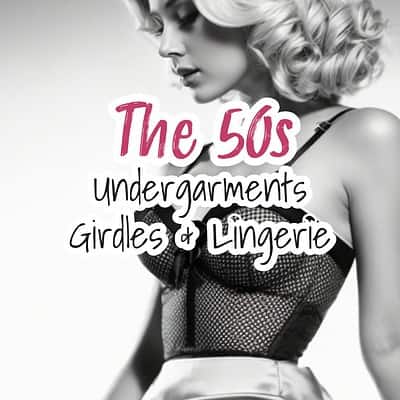
On one hand, underwear symbolized femininity, fashion and conformity to a perfect silhouette. On the other, undergarments were often uncomfortable, restrictive and mandatory wear for women and young girls. Lets look at the trends of the 1950s that reveals an intricate history interweaving allure and discomfort, liberation and restraint.
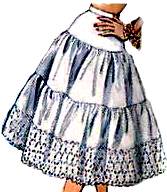
Petticoats
Petticoats defined the decade’s iconic bell-shaped skirts. Stiffened and layered to create volume, they lent fashionable silhouettes their signature bounce and swing. However, petticoats were not merely a stylish accessory.
Petticoats were often starched with a mixture of sugar and water, which was then hung to dry. Those wonderful “swing” skirts got their rhythm from layers of such petticoats.
Corsets and Girdles
The 1950s brought a partial liberation from past generations’ binding corsets by introducing new man-made materials that allowed for flexibility. However, girdles in this era still aimed to mold women’s bodies into an idealized hourglass shape.
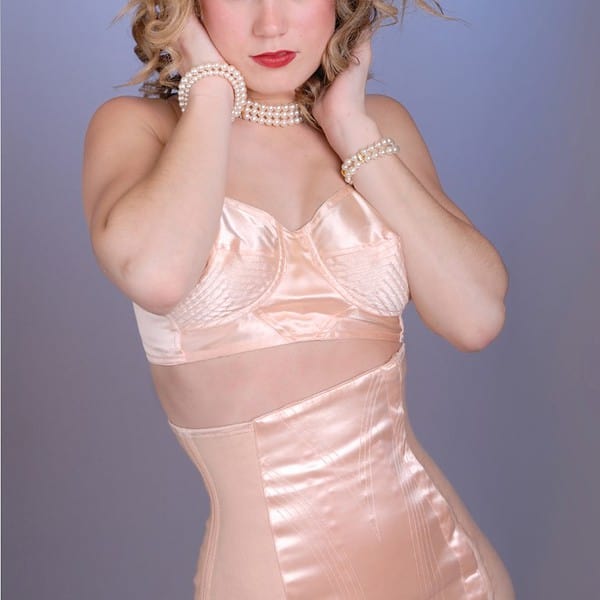
While advertisements claimed comfort, girdles actually squeezed and contorted, serving as a constant reminder to women of the imperative to meet the beauty standards of the time. The transition from corsets to girdles represented a significant shift.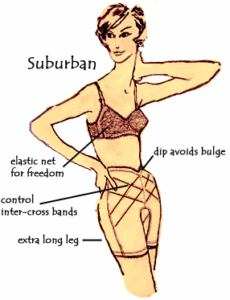
Unlike corsets, which were almost architectural in their construction, 1950s girdles offered a new promise: flexibility. Made from plastics instead of steel or whalebone, these modern marvels hugged the body’s contours without the restrictive nature of their predecessors.
With brands showcasing parade girdles during this period, women had a tool at their disposal to shape and contour their figures in alignment with the dominant hourglass ideal of the era.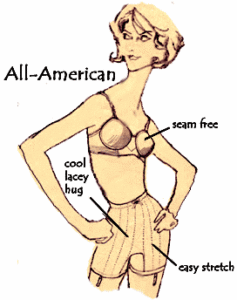
Bras
Bras offered accentuated lift and cleavage, with bold padding and pointed styles. Marketed as glamorous, bras were often heavily engineered contraptions closer to restraints than sources of comfort. The removal of such pieces offered both physical relief as well as symbolic freedom from societal mandates at the end of each day.
The bullet bra, popular in the 1950s, was known for its distinct pointed shape, which accentuated the bust. It was considered a glamorous and fashionable style during that era. Some of these had more uplift than a Saturn rocket booster!
Lingerie
Lingerie in the 1950s straddled the line between self-expression and duty.
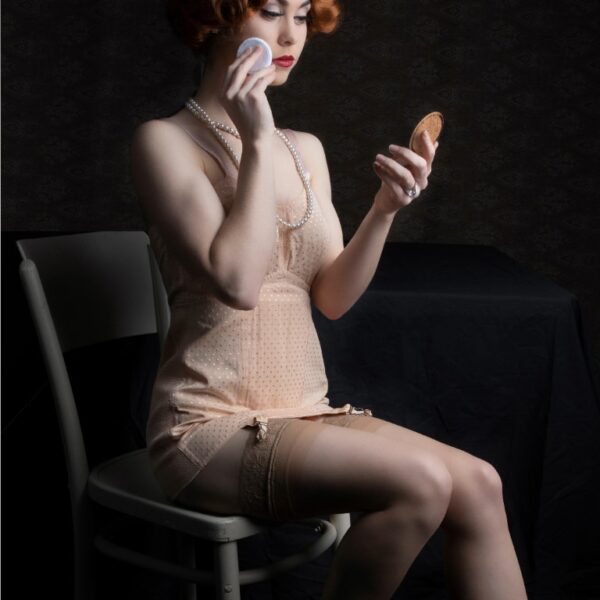
However, creative marketing language also sold whimsical aspirations of allure, hinting that undergarments offered a path to embrace and delight in feminine identity.
While some discomforts have eased, lingerie today still navigates the terrain between individuality and conformity. However, the vintage appeal of 1950s style endures as both inspiration and reminder of how far we’ve come. By learning from past constraints while celebrating new freedoms, modern lingerie can fully blossom as a source of self-care, playfulness and luxurious sensuality.
The Fifties came at the end of a long history of trying to enhance the female form to allure men. Curves were essential to getting the all important husband insuring the economic future and fulfilling the proper career of wife and mother. Undergarments of the 1950s were tools in crafting this essential allure
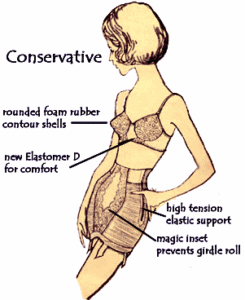
The corsetry of previous generations was by far more restrictive. Man-made materials like plastic replaced steel and whale bones, allowing girdles to become less rigid.
Make no mistake about it, the best part of the day was getting all that stuff off!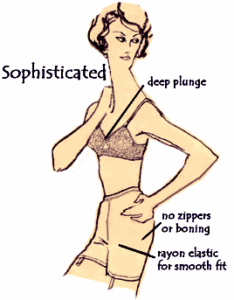
Below you will find several styles of bras and girdles. The pictures are exactly replicated. Note the use of the word “comfort” and the fanciful names. What imagination!

References
- Underwear: A History by Claire Wilcox (2011) [Google Books]
- The Underneath Story: A History of Lingerie by Paula Reed (2013) [Google Books]
- Squeezed: The Corset in Fashion and Culture by Valerie Steele (2001) [Google Books]
- Petticoats and Pin-Ups: A History of Feminine Fashion in the 1950s by Jo Paoletti (2008) [Google Books]
- The Ideal American Woman: Feminine Identity in the 1950s by Margaret Marsh (1994) [Google Books]
- The Body and Society: Social Theory and Cultural Practice by Bryan S. Turner (1996) [Google Books]
- Vogue magazine, February 1955, page 23: Advertisement for Frederick’s of Hollywood bullet bras [Internet Archive]
- Cosmopolitan magazine, March 1956, page 10: Article on “The New Girdle Magic” [Internet Archive]
- Life magazine, April 1957, page 113: Advertisement for Maidenform “Tummy-Controlette” girdles [Internet Archive]
